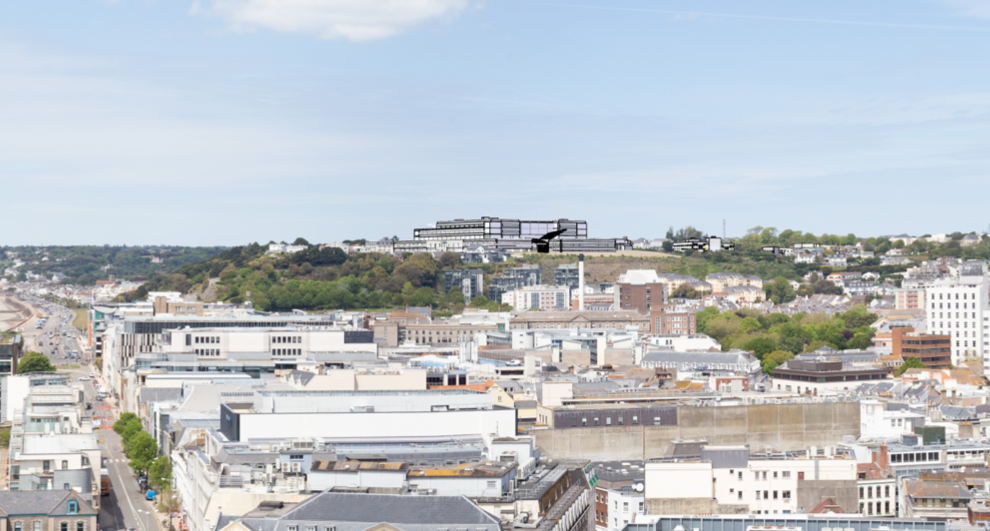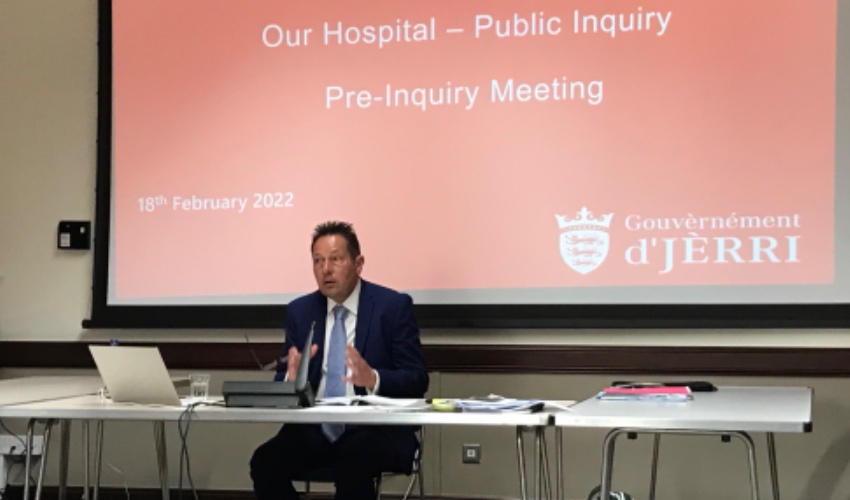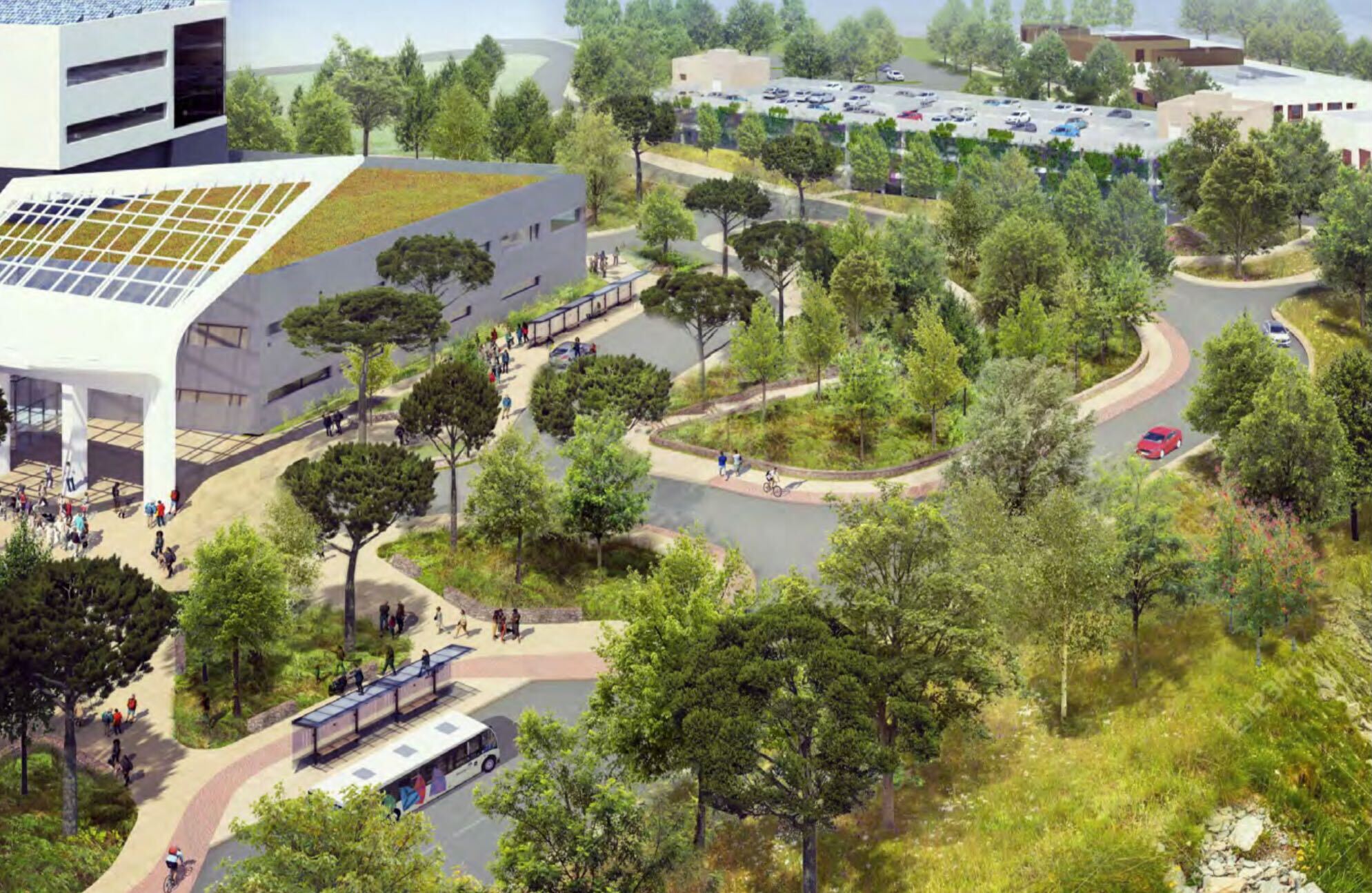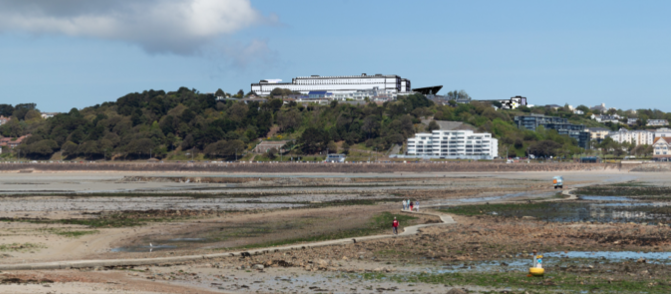


After 10 years and two failed planning applications, Jersey might finally be on its way to getting a new hospital.
Express takes a closer look at why the planning application for an £800m 'health campus' at Overdale got over the line...
In approving the hospital plans, Environment Minister Deputy John Young has broadly followed the recommendations of planning inspector Philip Staddon.
It was third time lucky for the Government, as Mr Staddon had rejected two previous incarnations of a new hospital, which were both earmarked for the current site in Gloucester Street.
It also overcame a recommendation from its own Planning Department, who recommended that the application be refused for a variety of reasons, including the proposed size and scale of the main block.
After trawling through more than 300 ‘core documents’ and the same number of submissions to the public inquiry that was held in April, just days after the Bridging Island Plan was approved, Mr Staddon submitted his recommendation to the Minister last Friday.
In his report, Mr Staddon concedes that “the project to deliver the new hospital has been dogged with difficulties, contention and delays.”

Pictured: Planning inspector Philip Staddon at the pre-inquiry meeting in February.
Referring to the past two refusals, he says: “Both of those schemes were contentious, with a significant number of objectors, and became politically charged, with ongoing questioning about whether the ‘right site’ was being pursued.”
This one was too, so why was this application passed when the other two were rejected?
In his report, Mr Staddon addresses why this one got over the line.
“The current scheme is therefore the third planning application for a new hospital proposal. However, its consideration differs significantly from earlier proposals in a number of important respects.
“First, it relates to an entirely different site at Overdale, which raises an entirely new set of locational and environmental factors to consider in the planning assessment.
“Second, the States Assembly has resolved that the Overdale site is the ‘right site’ and has chosen it as the location for the new hospital and it has also supported the principle of the related proposal for the road access improvements.
“Third, the application is submitted with full details, rather than as an ‘outline’ application, which gives certainty and precision to the development proposed.
“Fourth, the application was submitted at a time when the Island Plan 2011 (Revised 2014) was in the process of being replaced by the new Bridging Island Plan 2022. The BIP was adopted in March 2022, shortly before the Inquiry opened, and the application therefore falls to be considered and determined under its policies.
“Fifth, the BIP endorses the Overdale site selection and includes policy ‘CI3’, which affords ‘the highest level of priority’ to the development of the new hospital on this site, subject to a set of criteria.”
In summary, Mr Staddon concludes that the application meets the policy criteria established in the BIP, which States Members unanimously passed, as amended, at the end of March.
He also agrees that the need for a new hospital is clear and the 70,000 m2 of floorspace proposed is appropriate.
He finds: “Working to deliver the functional brief and its floorspace requirement, the applicant has demonstrated that an extremely thorough and creative exploration of site strategy options has been undertaken.
“All of those options entailed one very large and high main hospital building. The applicant has further evidenced that its chosen site strategy option performed better than others by a considerable margin.

Pictured: The gardens, trees, public areas, and landscaping of the Overdale site will not be allowed to deteriorate, as per a 'planning obligation agreement'.
He adds: “The applicant has also evidenced in some detail how it has evolved and finessed the design of the main new hospital proposal, and the other campus buildings, to achieve the best design which meets the functional brief and responds, as best it can, to the constraints and opportunities of the site.
“The result is an undisputedly high quality healthcare campus, with contemporary buildings in an attractive landscaped setting, which would enable patients and people within the hospital building to enjoy a very pleasant, indeed quite stunning, environment and panoramic views out to sea.”
Many critics of the new hospital plans highlighted the size and scale of the main block, as did the Planning Department themselves.
It was clearly something the inspector had to address in his report.
Mr Staddon identifies a number of policies of the BIP which the proposed design breaks, including ‘GD7’ which limits tall buildings, ‘GD8’, which seeks to restrain development within the ‘Green Backdrop Zone’, and ‘GD9’ which protects ‘skyline, views and vistas’, including distant views.
However, he concludes: “I assess that none of these adverse effects and policy conflicts and tensions are surprising.
“They are a direct product of the site allocation and the delivery of the required amount of building floorspace necessary to provide the hospital. The proposal will also change the character, identity and sense of place of the wider area around the site, although I consider that this change would not result in unacceptable harm.”
While Mr Staddon concludes that the proposal will harm heritage, he adds that these harmful effects “can only be justified by the exceptional circumstances arising from the public interest benefit of delivering the new hospital on its planned site.”

Pictured: The proposed view of the new hospital from Elizabeth Castle.
He adds: “It will affect Elizabeth Castle, Fort Regent and St Aubin’s Fort. In each case, the proposed main hospital building will be a considerable distance from the heritage assets, but the scale of the building and its elevated position means that it will form a new large landmark building within the wider setting of these historic sites.
“While the effects are unwelcome from a heritage perspective, they are sufficiently distanced to not be calamitous.”
Mr Staddon judges: “In transport and accessibility terms, the Westmount Road proposal and associated active travel corridor are appropriate and justified.
“The evidence indicates that the proposal will not result in any undue highway capacity or highway safety issues.
“The Westmount Road/active travel route, along with other measures, will deliver significant and necessary improvements to the site’s accessibility, such that the new hospital would be genuinely accessible by a choice of transport modes.”
Mr Staddon finds that while many of these buildings are in poor condition, others are not and are capable of continued use and occupation if the hospital project did not proceed.
He writes: “Policy ‘GD5’ rightly guards against unnecessary demolition of buildings in the interests of minimising waste, reducing building obsolescence, increasing building longevity, and making best use of their embodied carbon.
“However, the policy allows exceptions and these apply in this case, as it is not practical to keep the buildings and deliver the hospital, and the proposal will deliver sustainability, aesthetic and practical benefits.”
Mr Staddon is clear that, with so many grey areas, a ‘planning balance’ has to be struck.
He concludes: “The harm that will arise from this proposal is notably in terms of the substantial scale of a ‘landmark’ building that will result, permanently changing the townscape, the skyline, and the Green Backdrop Zone; resultant impacts on landscape and seascape character areas; the loss of heritage and harm to the settings of Listed buildings and places, including changing the wider and distant background settings of some of Jersey’s iconic heritage sites; and the loss of agricultural land, homes and other buildings, some of which are sound and in good condition.
“However, weighing heavily in favour of the proposal, there is significant compliance with a wide raft of strategic and other BIP planning policies.
“My assessment leads me to the conclusion that the vast majority of BIP policies are complied with, most in full and some by exception, whereby the identified harm is demonstrably outweighed by the public and community benefit arising from the proposal. There are a smaller number of clear policy conflicts.
He adds: “Importantly, the proposal would deliver the much-needed new hospital in line with policy CI3 which has been afforded the highest level of priority.

Pictured: Philip Staddon heard a wide variety of opinions at a five-day planning inquiry last month.
“I have assessed that, subject to planning conditions and obligations, all of the policy CI3 criteria have been met and that the proposal would deliver an undisputedly high quality healthcare campus, with contemporary buildings in an attractive landscaped setting, which would enable patients, visitors and staff to enjoy a very high quality environment.”
In a key paragraph in the report, he writes: “In my overall assessment, I find that the positives, in terms of policy compliance and major public benefits, outweigh the harms and policy tensions.
“I do not understate or downplay the harms and tensions against some policies, and I respect the views of those that have expressed opposition to the scheme, and have presented good arguments and evidence.
“However, this is a plan-led development and the plan-led conclusion of my assessment is not without consequence. It is a fact that a CI3-compliant development proposal was always likely to have the adverse effects and impacts that I have identified, given the nature of this once in a generation development proposal.
“Accepting the importance and imperative of delivering the hospital on this allocated site, the key overarching test is whether the application proposal represents the very best proposal in planning terms when considered ‘in the round’.
“My conclusion is that it does and that, when considered against the BIP holistically, and notwithstanding some acknowledged and identified tensions with certain policies, it accords with the plan as a whole.
“I recommend that the Minister grants planning permission, subject to recommended planning conditions and to the applicant entering a Planning Obligations Agreement.”
Those conditions include:
In addition to the conditions set by Mr Staddon, Deputy Young has also strengthened and upgraded some.
This include putting an arrangement in place to ensure that the landscaping is maintained in perpetuity through a Planning Obligations Agreement.
He said: “The landscaping of the site is extensive and crucial to soften the impact of buildings. Unfortunately, often budgets get cut and the gardens, trees and public realm can quickly be ignored. Planning conditions too can be ignored.
“So, I’ve elevated the maintenance of landscaping to a POA, which is a high level of legally enforceable protection.”
Deputy Young has also elevated concerns raised by the planning inspector about waste disposal from a ‘condition’ to another POA.
Mr Staddon concluded that “the proposed development will generate a substantial amount of waste and, while that might be an unavoidable necessity arising from delivering a new hospital, it raises significant waste management implications.
He added: “The current body of evidence gives some cause for concern that measures are not fully in place to manage the waste streams. A detailed and robust site waste management plan is required to address these matters, and this can be secured by a suitable planning condition.”
However, it is now going to be a POA, following the minister’s intervention.
Other upgrades by Deputy Young include holding public consultations to determine the materials to be used in the external finishes of all buildings and the external lights used.
He has also linked the landscaping plan to individual properties, so that each building – which have been named in Mr Staddon’s report - will have to have a bespoke plan approved by Planning.
£800m hospital at Overdale is approved
Gov delays borrowing for new hospital
Supporters and opponents respond to hospital green light
Grins, groans and GIFs... Social media reacts to the hospital decision
TIMELINE: A decade of (in)decision
FOCUS: 10 years since we agreed a 'New Way Forward' for Health... What happened?
Comments
Comments on this story express the views of the commentator only, not Bailiwick Publishing. We are unable to guarantee the accuracy of any of those comments.
Once your comment has been submitted, it won’t appear immediately. There is no need to submit it more than once. Comments are published at the discretion of Bailiwick Publishing, and will include your username.
There are no comments for this article.